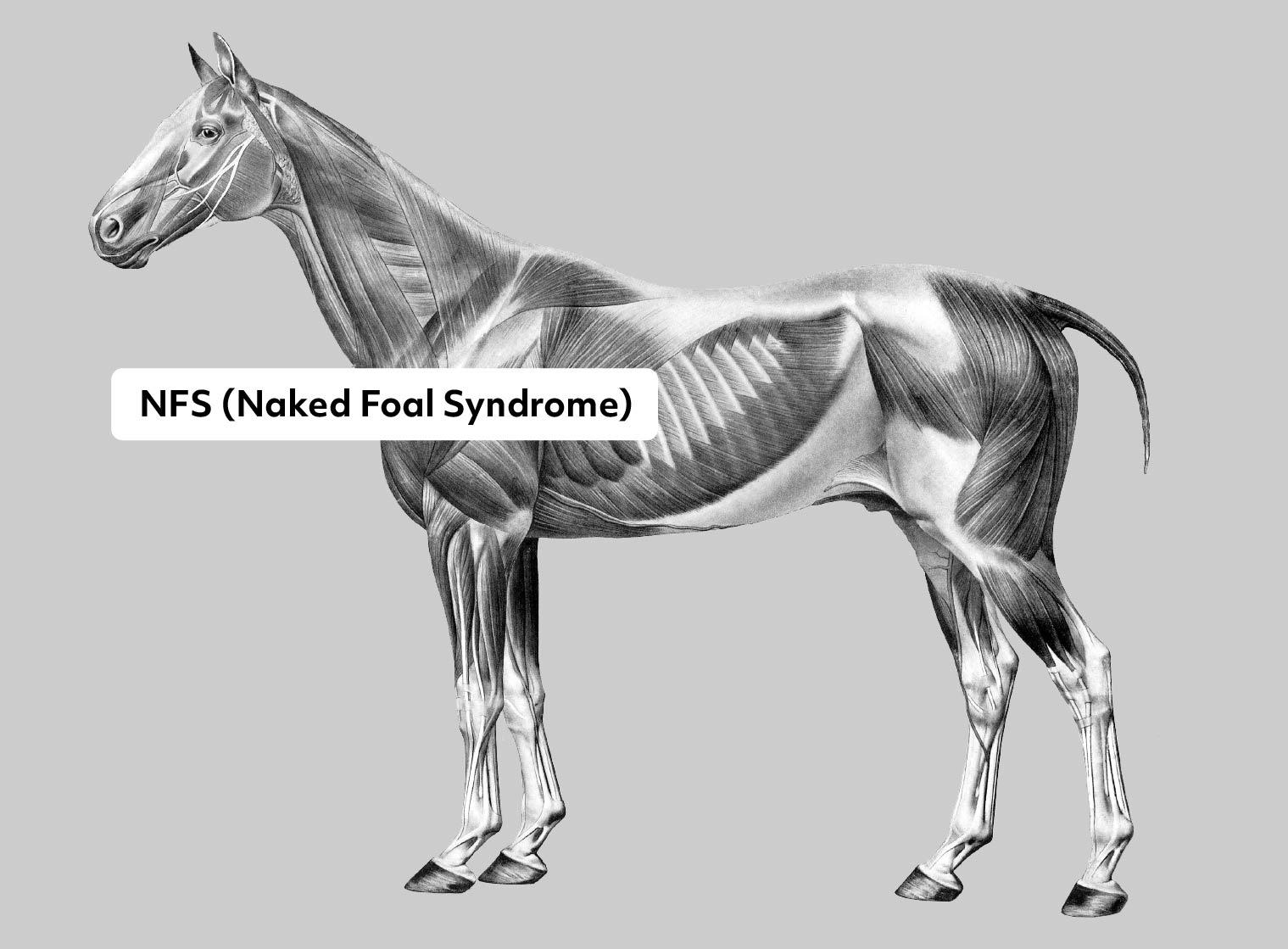Naked Foal Syndrome (NFS)
Gene or Region: ST14
Reference Variant: G
Mutant Variant: T
Affected Breeds: Akhal Teke
Research Confidence: Moderate confidence, strong correlation in larger studies
Explanation of Results: nfs/nfs = homozygous for Naked Foal Syndrome, trait likely expressed/likely lethal nfs/n = heterozygous for Naked Foal Syndrome, carrier n/n = no variant detected
General Description for Naked Foal Syndrome
Naked Foal Syndrome (NFS) is a recessive genetic disorder resulting in the birth of foals with little to no hair and a general weakness with death occurring early in life (weeks to months).
References
Bauer, A., Hiemesch, T., Jagannathan, V., Neuditschko, M., Bachmann, I., Rieder, S., Mikko, S., Penedo, M. C., Tarasova, N., Vitková, M., Sirtori, N., Roccabianca, P., Leeb, T., & Welle, M. M. (2017). A Nonsense Variant in the ST14 Gene in Akhal-Teke Horses with Naked Foal Syndrome. G3 (Bethesda), 7(4), 1315-1321. doi: 10.1534/g3.117.039511
More Horse Health
Equine Herpes Virus Type 1 & Induced Myeloencephalopathy
Equine herpesviruses are DNA viruses that are found in most horses all over the world, often without any serious side effects. Following infection of Equine Herpesvirus Type 1 (EHV-1) some horses then suffer Equine Herpesvirus Myeloencephalopathy (EHM), which is is accompanied by serious and sometimes fatal neurological effects. EHM in horses can have serious neurological symptoms on affected horses.
Equine Metabolic Syndrome / Laminitis Risk
Equine Metabolic Syndrome (EMS) is a wide-spread issue in the horse population. Primarily characterized by hyperinsulinemia (excess insulin circulating in the blood in relation to glucose levels), this metabolic disorder is often present in obese horses and ponies and can be challenging to diagnose as it can be misdiagnosed as "Cushing's" (a pituitary disfunction).
Equine Recurrent Uveitis Risk and Severity
Equine Recurrent Uveitis (ERU) is the most common cause of blindness in horses, affecting about 3-15% of the horse population worldwide. Characterized by episodes of inflammation of the middle layer of the eye, Equine Recurrent Uveitis in horses leads to the development of cataracts, glaucoma and eventually complete loss of vision.
